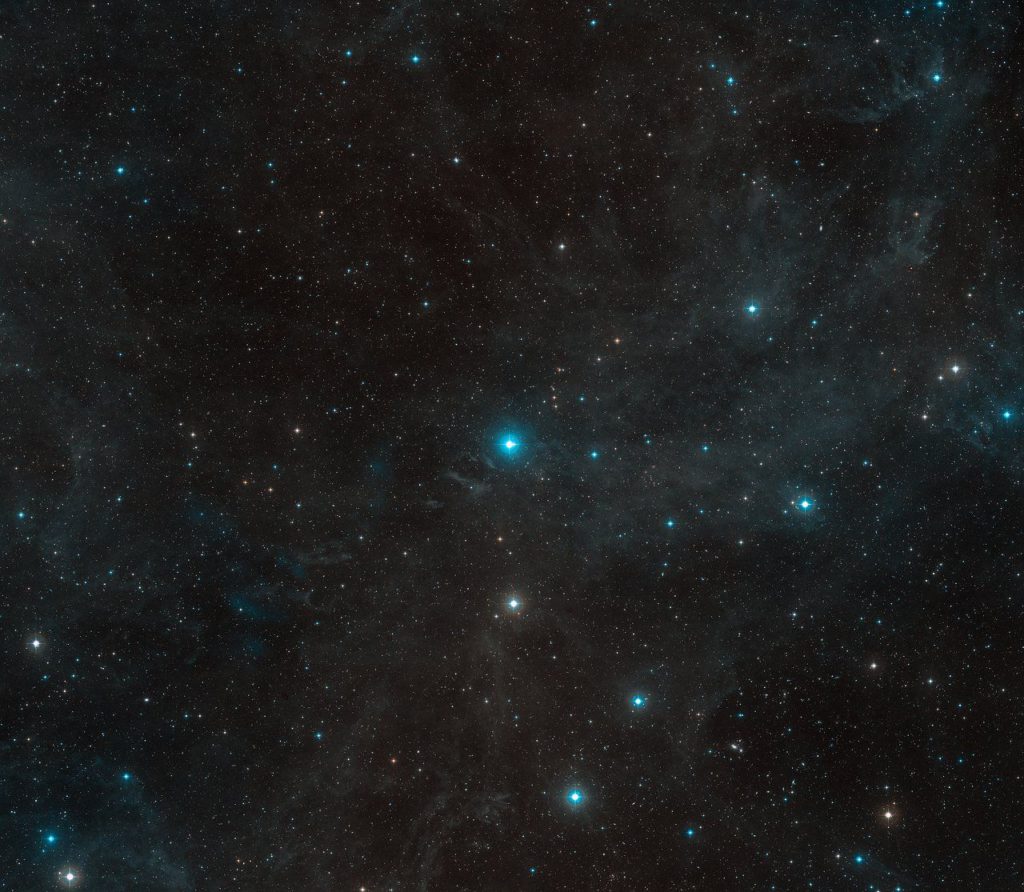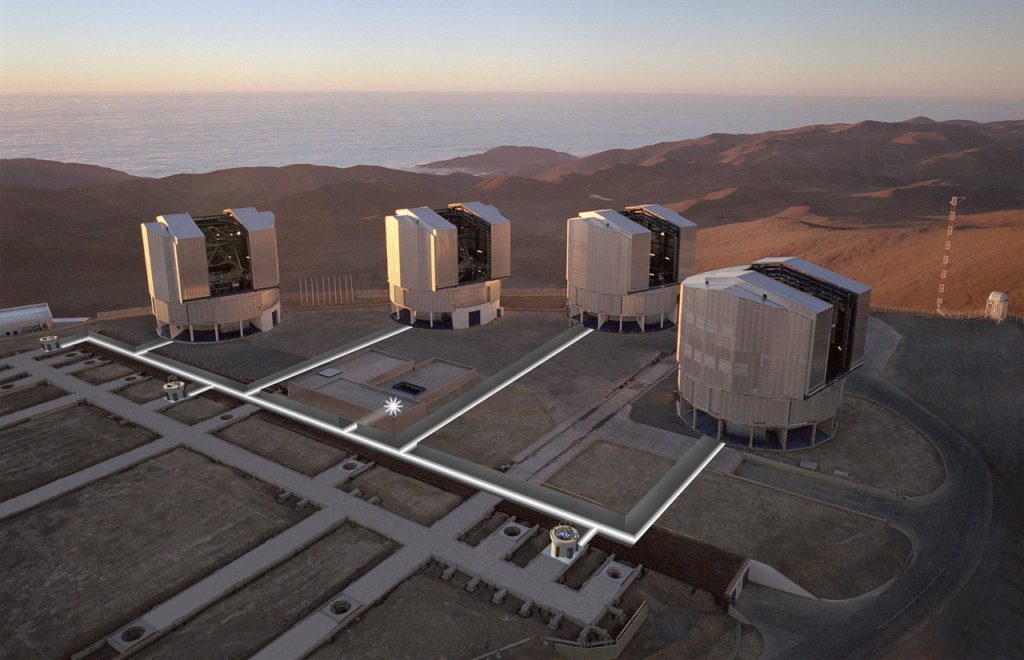Cutting-edge VLTI instrument reveals details of a storm-wracked exoplanet using optical interferometry
The GRAVITY instrument on ESO’s Very Large Telescope Interferometer (VLTI) has made the first direct observation of an exoplanet using optical interferometry. This method revealed a complex exoplanetary atmosphere with clouds of iron and silicates swirling in a planet-wide storm. The technique presents unique possibilities for characterising many of the exoplanets known today.
This result was announced today in a letter in the journal Astronomy and Astrophysics by the GRAVITY Collaboration, in which they present observations of the exoplanet HR8799e using optical interferometry. The exoplanet was discovered in 2010 orbiting the young main-sequence star HR8799, which lies around 129 light-years from Earth in the constellation of Pegasus.

Today’s result, which reveals new characteristics of HR8799e, required an instrument with very high resolution and sensitivity. GRAVITY can use ESO’s VLT’s four unit telescopes to work together to mimic a single larger telescope using a technique known as interferometry. This creates a super-telescope — the VLTI — that collects and precisely disentangles the light from HR8799e’s atmosphere and the light from its parent star.
HR8799e is a ‘super-Jupiter’, a world unlike any found in our Solar System, that is both more massive and much younger than any planet orbiting the Sun. At only 30 million years old, this baby exoplanet is young enough to give scientists a window onto the formation of planets and planetary systems. The exoplanet is thoroughly inhospitable — leftover energy from its formation and a powerful greenhouse effect heat HR8799e to a hostile temperature of roughly 1000 °C.
A planet hit by violent storms
This is the first time that optical interferometry has been used to reveal details of an exoplanet, and the new technique furnished an exquisitely detailed spectrum of unprecedented quality — ten times more detailed than earlier observations. The team’s measurements were able to reveal the composition of HR8799e’s atmosphere — which contained some surprises.
“Our analysis showed that HR8799e has an atmosphere containing far more carbon monoxide than methane — something not expected from equilibrium chemistry,” explains team leader Sylvestre Lacour researcher CNRS at the Observatoire de Paris – PSL and the Max Planck Institute for Extraterrestrial Physics. “We can best explain this surprising result with high vertical winds within the atmosphere preventing the carbon monoxide from reacting with hydrogen to form methane.”

The team found that the atmosphere also contains clouds of iron and silicate dust. When combined with the excess of carbon monoxide, this suggests that HR8799e’s atmosphere is engaged in an enormous and violent storm.
“Our observations suggest a ball of gas illuminated from the interior, with rays of warm light swirling through stormy patches of dark clouds,” elaborates Lacour. “Convection moves around the clouds of silicate and iron particles, which disaggregate and rain down into the interior. This paints a picture of a dynamic atmosphere of a giant exoplanet at birth, undergoing complex physical and chemical processes.”
This result builds on GRAVITY’s string of impressive discoveries, which have included breakthroughs such as last year’s observation of gas swirling at 30% of the speed of light just outside the event horizon of the massive Black Hole in the Galactic Centre. It also adds a new way of observing exoplanets to the already extensive arsenal of methods available to ESO’s telescopes and instruments — paving the way to many more impressive discoveries.


